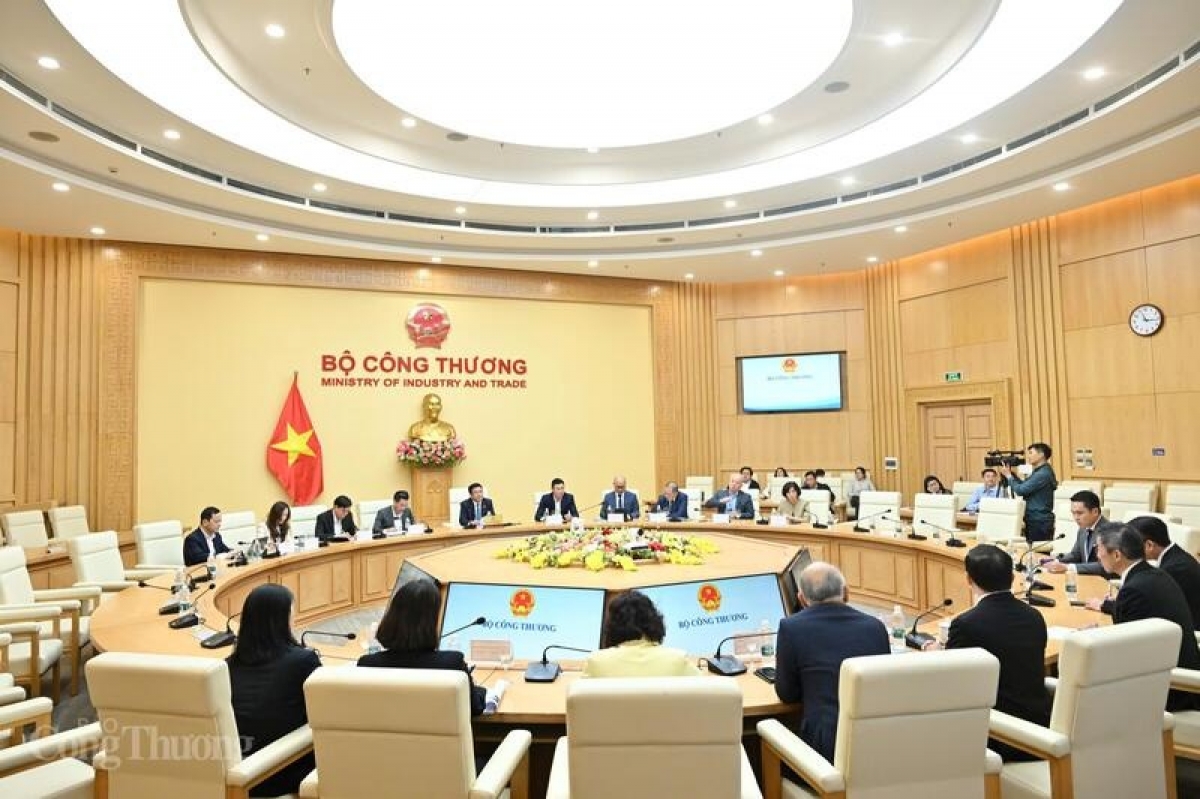INTERNATIONAL INVESTMENT
AND PORTAL
How should Vietnamese companies prepare for the effects of climate change?
Typhoon Yagi in September underscored the urgent need for businesses to treat climate-induced risks as a critical operational concern. Companies must remain vigilant against the unpredictable impacts of climate-driven natural disasters. To mitigate these risks, businesses should consider a range of strategies.
 Pham Nguyen Vinh, corporate development director at Dragon Capital
Pham Nguyen Vinh, corporate development director at Dragon Capital Conducting climate risk assessments is a vital first step. Following the recommendations of the Task Force on Climate-related Financial Disclosures enables companies to identify and evaluate the risks posed by climate change to their operations. The framework provides guidance on governance, strategy, risk management, metrics, and targets, helping businesses enhance their resilience.
Reviewing insurance policies is also crucial. Insurers already account for climate risks in premiums for regions exposed to extreme weather events. Companies should ensure their policies adequately protect assets and minimise financial losses in high-risk areas.
Having a comprehensive emergency response plan is essential. Businesses must establish robust protocols for asset protection, worker safety, and post-disaster recovery. For example, factories in the northern port city of Haiphong, heavily impacted by the typhoon, could benefit from investing in higher building standards to withstand extreme weather.
Strengthening infrastructure to withstand severe weather also plays a critical role in reducing long-term impacts and ensuring operational stability. By proactively addressing climate risks, businesses can safeguard sustainable operations in an increasingly challenging environment.
What initiatives can help businesses manage emissions and build a carbon market?
Encouraging Vietnamese companies to track greenhouse gas (GHG) emissions and work towards establishing a carbon market requires initiatives that focus on standardisation, incentives, and technical support.
Standardising procedures is essential for consistency across sectors. Clear guidelines on measurement criteria, monitoring systems, and data collection methods ensure that businesses report their emissions accurately. Providing tailored advice for each sector on appropriate technologies and emissions reduction methods further facilitates implementation.
Unified reporting standards also enhance clarity. For instance, the handbook on GHG emissions reporting, launched by the State Securities Commission and the International Finance Corporation in August 2023, offers practical guidance for businesses.
Developing financial incentives and technical support is another important step. Incentives such as tax reductions or preferential loans for green projects within the green taxonomy, as well as subsidies for emissions inventory and reduction investments, can ease the transition for businesses.
Equipping companies with specialised expertise is equally vital. Training programmes and technical tools offered by the government and investment organisations help businesses develop carbon management skills, reduce compliance costs, and transition to low-emission operations.
What regulatory requirements impact Vietnamese businesses in emission reduction?
Globally, at least 29 countries now mandate environmental, social, and governance (ESG) reporting, with the EU leading efforts towards carbon neutrality by 2050. Over 40 countries require regular GHG emissions reporting, particularly for high-revenue companies. The EU’s Corporate Sustainability Reporting Directive, issued in 2023, requires emissions reporting by 2025.
Locally, several regulations are shaping corporate responsibilities in emissions reduction. Since last month, entities emitting over 3,000 tonnes of CO2e annually must conduct emissions inventories every two years. Starting in 2026, high-emission sectors such as energy, transport, and industrial production will be required to implement emissions reduction measures. Listed companies are mandated to include environmental and social impact reports in their annual disclosures, addressing both direct and indirect GHG emissions and reduction initiatives.
Meanwhile, the EU’s Carbon Border Adjustment Mechanism (CBAM) aims to cut emissions by at least 55 per cent from 1990 levels by 2030. The mechanism, currently in its transitional phase, imposes carbon taxes on imports such as steel, cement, aluminium, and fertilisers. Although these exports represent a small portion of Vietnam’s trade, the CBAM significantly increases costs, reducing competitiveness in the EU market. To maintain EU market access, Vietnamese businesses must align with CBAM’s transparency requirements.
Companies should establish robust emissions tracking and reporting systems and streamline internal practices to reduce emissions across supply chains. Adopting green production processes and automation software for carbon management can further lower compliance costs, improve data accuracy, and meet regulatory demands.
In addition to meeting these requirements, green production practices offer a competitive edge in markets where consumers value environmental sustainability.
 Full ESG adoption the priority for Agribank
Full ESG adoption the priority for Agribank As sustainable development becomes a mandate for the banking industry, Nguyen Thi Thu Ha, deputy head of the Steering Committee for Environmental, Social, and Governance at Agribank, talked with VIR’s Nhue Man on the importance of adopting ESG criteria.
 Standard Chartered committed to Vietnam’s financial success
Standard Chartered committed to Vietnam’s financial success According to the International Monetary Fund’s World Economic Outlook Report in April this year, Vietnam is the only Southeast Asian representative in the top 10 countries with a forecast of 6.4 per cent growth from 2024 to 2029.
 The promotion of ESG via banking
The promotion of ESG via banking Given Vietnam’s economic characteristics, with one of the highest credit-to-GDP ratios globally, credit capital plays a crucial role in guiding and promoting business activities and socioeconomic development.



















